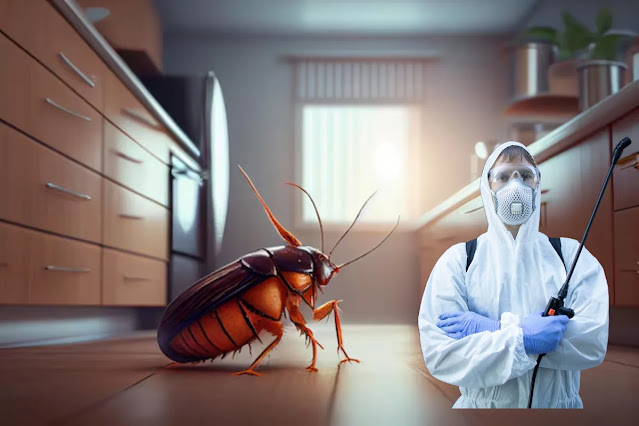Top Tips to Prepare Your Home for Effective Pest Control
Pest control is essential for maintaining a safe, healthy, and comfortable living environment. Whether you're dealing with ants, cockroaches, termites, or rodents, professional pest treatment is often the most reliable solution. However, to get the best results from any pest control service, proper preparation is key. A well-prepped home ensures that the treatment works effectively and helps protect your household during and after the process.
In this guide, we’ll walk you through the top tips to prepare your home for pest control treatment, so you can maximize the results while keeping your family safe.
1. Understand the Type of Treatment
Before anything else, speak with your pest control provider to understand the type of treatment being used. Is it a spray, fumigation, baiting, or gel-based treatment? Different methods require different levels of preparation.
For example:
-
Fumigation may require vacating the house completely.
-
Spray treatments need you to cover surfaces and food items.
-
Baiting treatments often require less disruption but still need access to pest-prone areas.
Knowing what to expect helps you take the right precautions without overdoing it.
2. Clean and Declutter
A clean home allows pest control service professionals to access all necessary areas easily. It also prevents pests from having hiding spots during the treatment. Here's what you can do:
-
Vacuum floors and carpets to remove crumbs and debris.
-
Clear out storage areas, such as under sinks and behind appliances.
-
Declutter rooms—especially the kitchen, bathrooms, and pantry.
-
Take out the trash and ensure bins are cleaned.
Clean surfaces also ensure the pesticides or gels adhere properly without being diluted or blocked by dust.
3. Store Food and Utensils Safely
Food contamination is a major concern during pest control. You should:
-
Store all food in sealed containers or remove them from the kitchen and dining areas.
-
Cover or remove plates, cutlery, and kitchen gadgets.
-
If you have open containers of grains or snacks, place them in airtight plastic bins or temporarily move them out of the treatment area.
For fumigation treatments, removing all perishables from the house might be necessary.
4. Move Furniture and Appliances
Pests love hiding in dark, undisturbed areas—like behind your refrigerator, under the bed, or in your wardrobes. Move furniture slightly away from the walls to allow easy access to corners and baseboards, where pests often nest or move through.
-
Pull sofas, beds, and dressers 4–6 inches away from walls.
-
Unplug electrical appliances if needed and ensure there's no standing water behind them.
This makes it easier for pest control experts to treat the entire area thoroughly.
5. Secure Pets and Plants
Your furry friends and plants can be sensitive to pest control chemicals. Here’s what you should do:
-
Relocate pets (cats, dogs, birds, etc.) to a safe area away from the treatment site. If you're having the whole house treated, consider asking a friend or kennel to watch them for the day.
-
Remove or cover fish tanks and switch off air pumps during the treatment.
-
Move indoor plants outside or to another room not being treated.
Be sure to ask your pest control provider how long to wait before letting pets and plants back into the treated space.
6. Seal Personal and Sensitive Items
Pest control chemicals can irritate the skin and eyes. To be safe, protect your personal belongings:
-
Store clothing, cosmetics, toiletries, and baby items in sealed bags or containers.
-
Cover mattresses and pillows with plastic covers or remove them from the treatment area if advised.
-
Remove important documents, jewelry, and electronics from open spaces or store them in drawers.
This step ensures your valuables remain uncontaminated and safe.
7. Make a Post-Treatment Plan
After the pest control work is done, you’ll need to follow a few steps to maintain its effectiveness:
-
Avoid deep cleaning treated areas immediately—it may wash away the pesticides.
-
Wait the recommended time before re-entering your home or letting kids and pets back in.
-
Ventilate the house properly by opening windows and turning on fans if instructed.
Also, ask your pest control provider if follow-up visits are necessary and whether you’ll need to change your daily habits (like sealing food or fixing water leaks) to prevent re-infestation.
8. Communicate with the Professionals
Don’t hesitate to ask your pest control technician for specific instructions. Every home and every pest situation is different, so personalized guidance is always best.
Ask things like:
-
“How long should I stay out of the house?”
-
“When can I clean the floors?”
-
“Is this treatment safe for pets and children?”
-
“Do I need to do anything after the treatment?”
Clear communication ensures you’re doing everything necessary to protect your household and get the most from the service.
Final Thoughts
A successful pest control treatment isn’t just about the chemicals used—it’s also about how well you prepare your home. With the right prep work, you’ll not only make the technician’s job easier, but also boost the effectiveness of the pest control treatment and help prevent pests from coming back.
From cleaning and covering up to clearing out and communicating, each step plays a part in creating a pest-free environment. So the next time you ask yourself, “How can I get the most out of my pest control service?” — start with proper preparation.


.webp)

Comments
Post a Comment